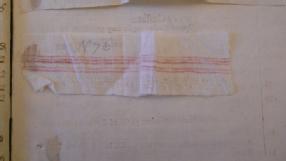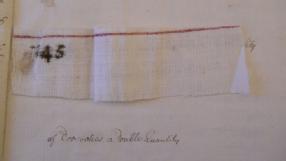Textile Databases
EAST INDIA COMPANY TRADED TEXTILES TO EUROPE GLOSSARY- a textual and visual resource
Introduction
This sub-project began with lists of Dutch East India Company (VOC) and English East India Company (EEIC) orders in the first half of the eighteenth century collated by Chris Nierstrasz as part of the Trading Eurasia 1600-1830 Project. While the numbers of goods listed provide ample scope for quantitative analysis, there is a constant problem of understanding what the textiles traded were: silk or cotton, coloured, patterned or plain, their specific qualities and characteristics, and what they were they used for. What exactly were ballasors, baftas and berams? Hence the attempt to try to relate the names of the textiles appearing in the order lists with contemporary descriptions relating to construction, colour, use and comparative qualities, and with surviving samples in museums and archives, so we can actually see what the fabrics looked like. This will help us understand the shifts in demand, fashion change and response. The list give a very good insight into how these textiles developed over time and we want to use this information to arrive at improved definitions for the cottons and silks brought back to Europe by East India Companies. The strong point of this new glossary is that it crosses the national boundaries that have existed so long in the study of this subject, one of the key features of this pan-European project.
Sample of Textiles
 |
 |
 |
